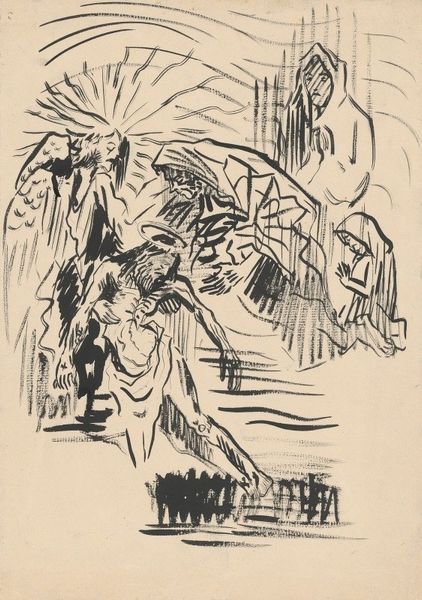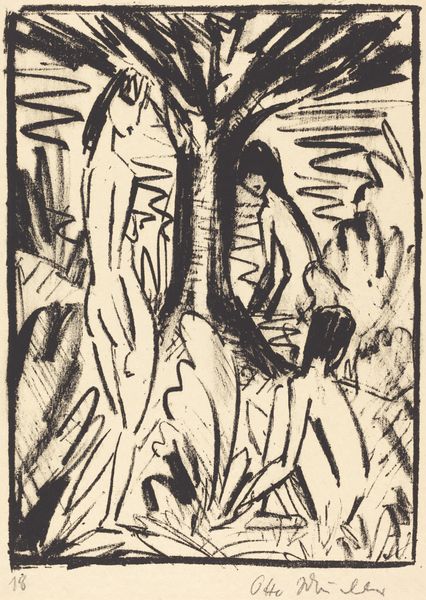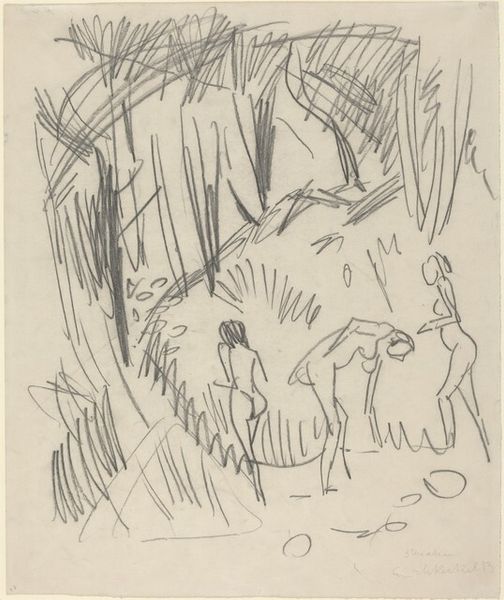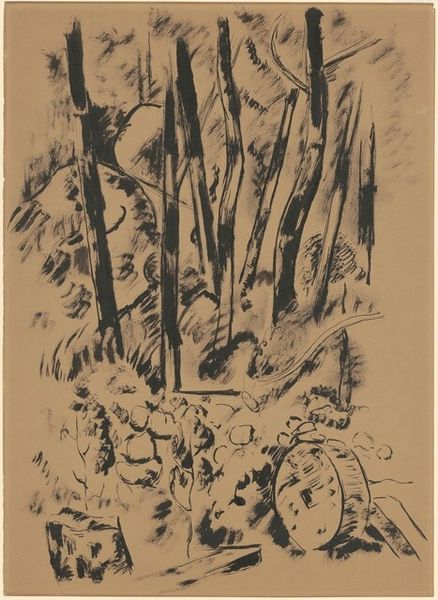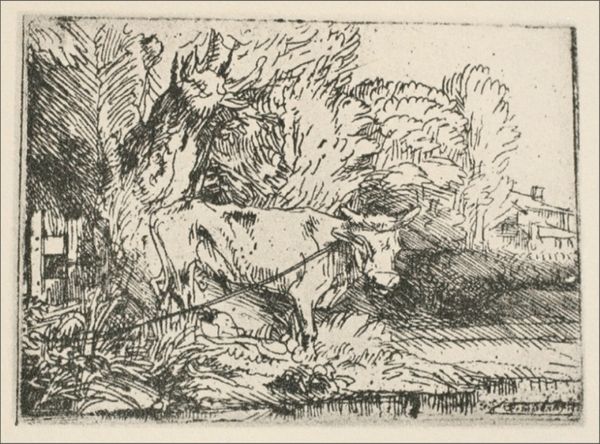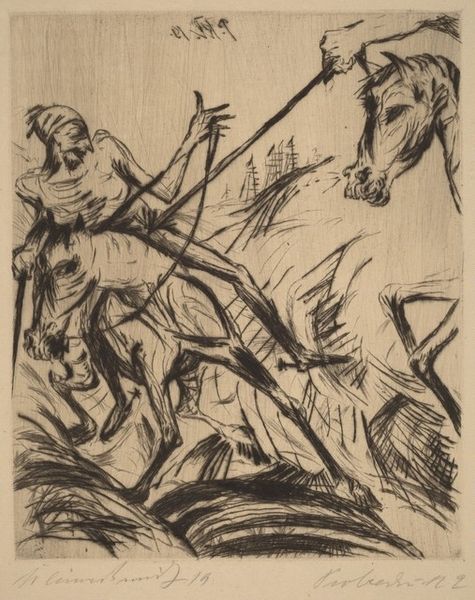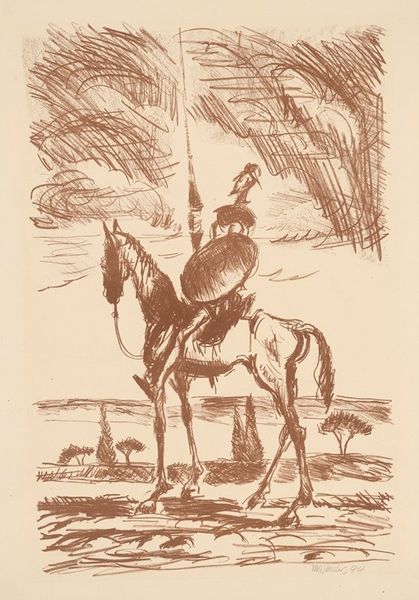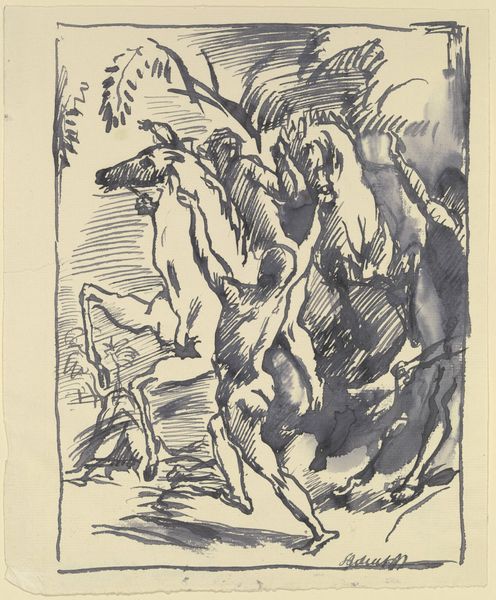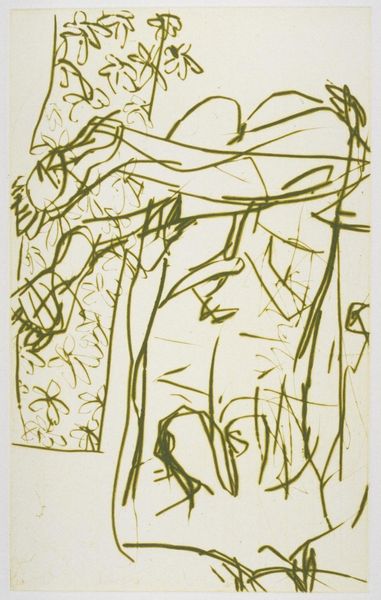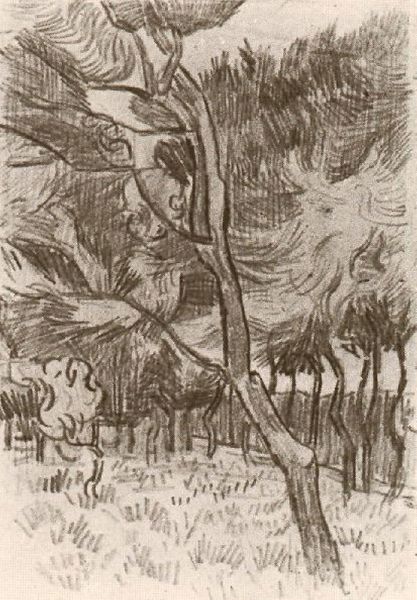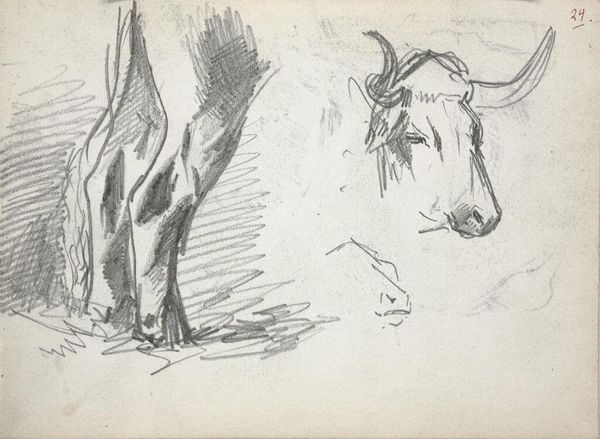
drawing, print, ink, graphite
#
drawing
# print
#
landscape
#
figuration
#
ink
#
expressionism
#
graphite
Dimensions: overall: 38 x 28 cm (14 15/16 x 11 in.)
Copyright: National Gallery of Art: CC0 1.0
Curator: Looking at this expressive drawing from 1921 by Richard Seewald, titled "Goats," I'm immediately struck by how unsettled it feels. The lines are so jagged and frantic. Editor: I agree. It's certainly not a serene pastoral scene. The animals and landscape elements are all rendered with a nervous energy. What do we know about the context of Seewald's work at this time? Curator: Well, Seewald was associated with Expressionism. The prevailing feeling of pre-war optimism was over and artists grappled with the trauma of conflict. This graphite and ink drawing may reflect this cultural shift in artistic expression. The goats, especially, don’t appear peaceful. Editor: Exactly. The way the goats are depicted—one seemingly mid-leap, suspended—suggests an attempt to escape something, or perhaps an awkward balance in their environment. In many cultures, goats symbolize virility, stubbornness, but also resourcefulness. Curator: Right. Given the social climate of the 1920s, it might also be seen as a commentary on societal instability. The lack of a clear focal point emphasizes a kind of disarray or even panic. Editor: I notice the spiky plants, almost weapon-like. Even the sun looks harsh and unwelcoming, far removed from traditional symbols of warmth or divine presence. It's as if Seewald deliberately stripped away any comfortable or idyllic imagery. Curator: Yes, it could be that this unsettling portrayal reflects post-war disillusionment. The seemingly simple subject of animals in nature carries much deeper connotations. Editor: Absolutely. Seewald manages to tap into something primal. I find that despite the rough style and seemingly simple choice of subject, it prompts questions about survival, resilience, and adaptation in a turbulent world. Curator: A fresh perspective on how the effects of conflict are visible, not only on society, but on its art and its symbolism. Editor: A stark but intriguing reflection of the times, seen through the distorted mirror of pastoral life.
Comments
No comments
Be the first to comment and join the conversation on the ultimate creative platform.

